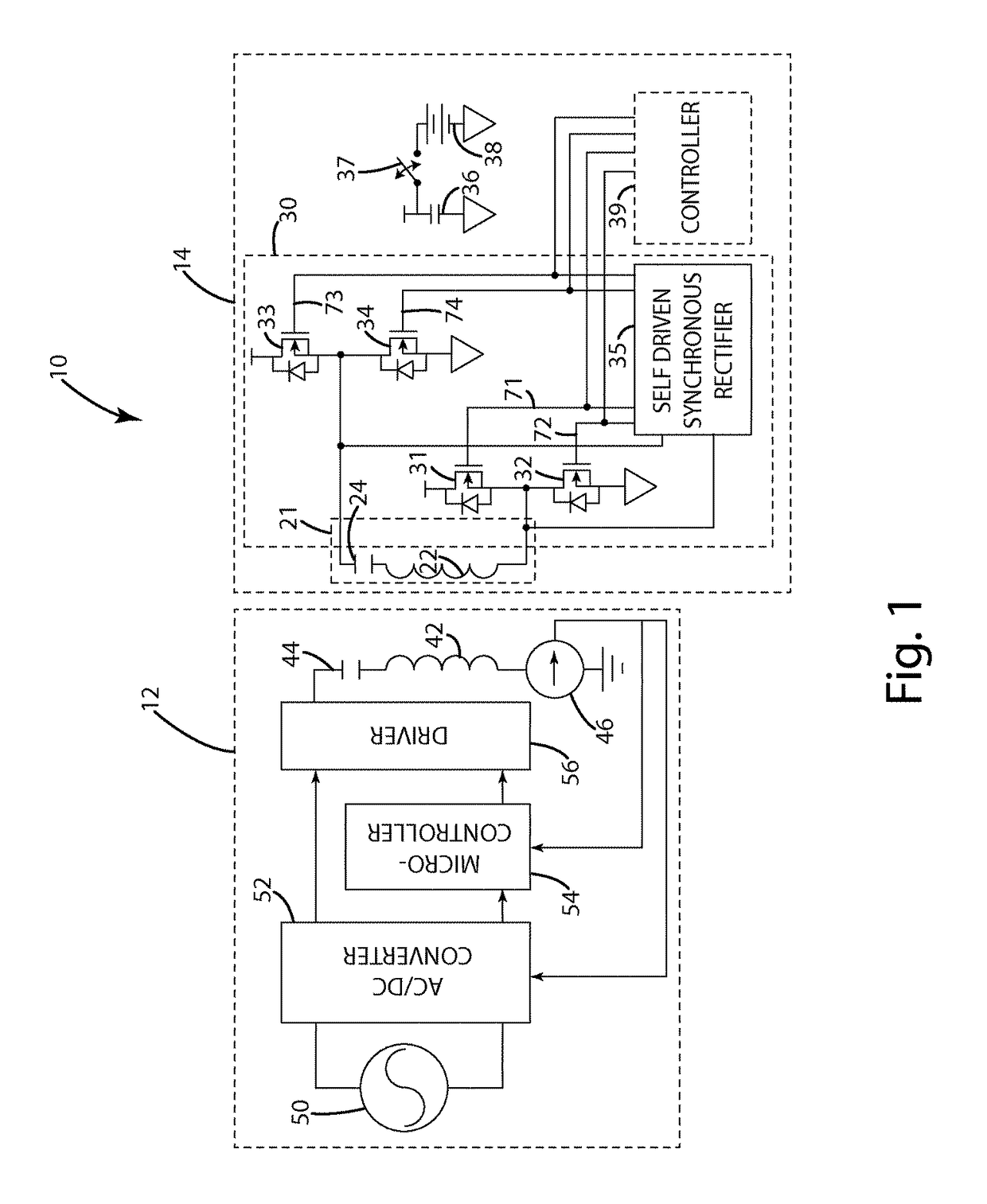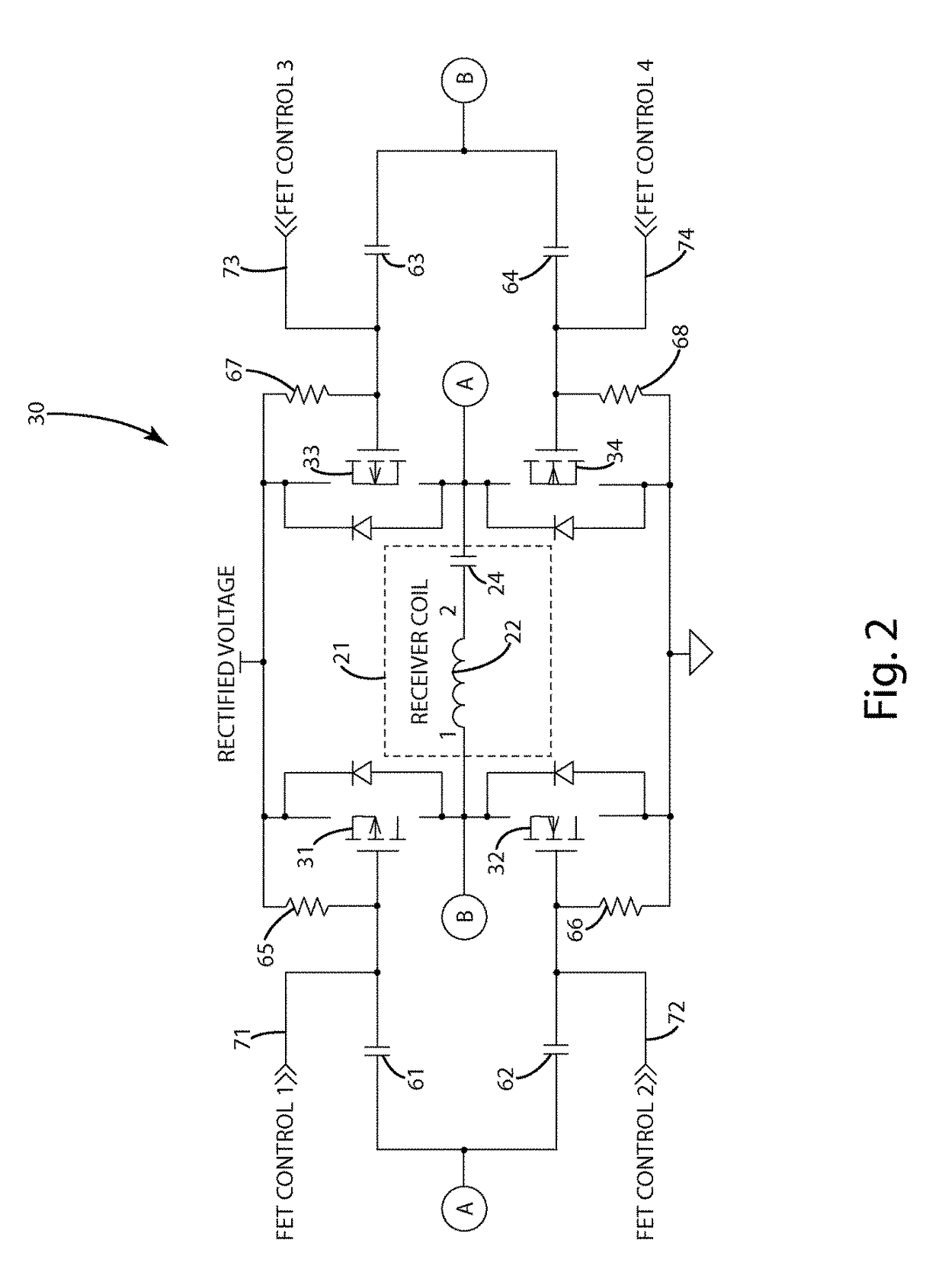System and method for bidirectional wireless power transfer
a wireless power supply and wireless technology, applied in the direction of electric variable regulation, process and machine control, instruments, etc., can solve the problems of affecting the operation and the interface of the conventional connector is prone to mechanical failure, so as to reduce or eliminate the power draw of the wireless power supply. , the effect of simple and effectiv
- Summary
- Abstract
- Description
- Claims
- Application Information
AI Technical Summary
Benefits of technology
Problems solved by technology
Method used
Image
Examples
second embodiment
D. Second Embodiment
[0110]In a second embodiment of the present invention, the wireless power supply system 110 is similar to those described herein with respect to wireless power supply system 10, including wireless power supply 12 and remote device 14, with several exceptions. The second embodiment may include a remote device 114 similar to the remote device 14 of the illustrated embodiments of FIGS. 1-8 but with multiple secondaries. In one embodiment, multiple secondaries in remote device 114, 114′ may be selectively activated to transmit or receive wireless power. It should be understood that remote devices 114, 114′ are not limited to operation with each other, and that the remote device 114 may be used in conjunction with other devices or wireless power supplies described herein, including wireless power supply 12 as shown in the illustrated embodiment of FIG. 9.
[0111]In the illustrated embodiments of FIGS. 9-13, the remote devices 114, 114′ are similar to the remote device 1...
third embodiment
E. Third Embodiment
[0121]In a third embodiment of the present invention, the wireless power supply system 210 is similar to those described herein, including wireless power supply 12, with several exceptions. The third embodiment may include a wireless power supply 212 similar to the wireless power supply 12 of the illustrated embodiment of FIGS. 1 and 3-7 but with additional circuitry controlling the converter 52.
[0122]The wireless power supply 212 according to this third embodiment is described with respect to the illustrated embodiments of FIGS. 14 and 15. As with the wireless supply 12, the wireless power supply 212 may include a coupler 46 capable of activating the converter 52 in response to power being present in the primary 42. Wireless power supply 212 may further include logic circuitry 251 capable of accepting an input from other sources, enabling activation of the converter 52 or continued activation of the converter 52 from a source other than the coupler 46.
[0123]In th...
fourth embodiment
F. Fourth Embodiment
[0127]In a fourth embodiment of the present invention, the wireless power supply system 310 is similar to those described herein, with several exceptions. The fourth embodiment may include a wireless power supply 312 similar to the wireless power supply 12 and a remote device 314 similar to the remote device 14. As mentioned herein, the wireless power supply 312 and the remote device 314 may include circuitry capable of establishing a separate communication link therebetween, such as an NFC link, TransferJet link, or a Bluetooth link. Such a communication link may be formed by a low power communication system, allowing the remote device 314 to locate wireless power supplies using the same methods it uses to locate other types of devices / sensors without using excess power or draining excess power from the battery. For example, the wireless power supply 312 may include an NFC tag 344 and an NFC tag coil 342, and the remote device 312 may include an NFC transceiver ...
PUM
| Property | Measurement | Unit |
|---|---|---|
| rail voltage | aaaaa | aaaaa |
| rail voltage | aaaaa | aaaaa |
| current | aaaaa | aaaaa |
Abstract
Description
Claims
Application Information
 Login to View More
Login to View More - R&D
- Intellectual Property
- Life Sciences
- Materials
- Tech Scout
- Unparalleled Data Quality
- Higher Quality Content
- 60% Fewer Hallucinations
Browse by: Latest US Patents, China's latest patents, Technical Efficacy Thesaurus, Application Domain, Technology Topic, Popular Technical Reports.
© 2025 PatSnap. All rights reserved.Legal|Privacy policy|Modern Slavery Act Transparency Statement|Sitemap|About US| Contact US: help@patsnap.com



